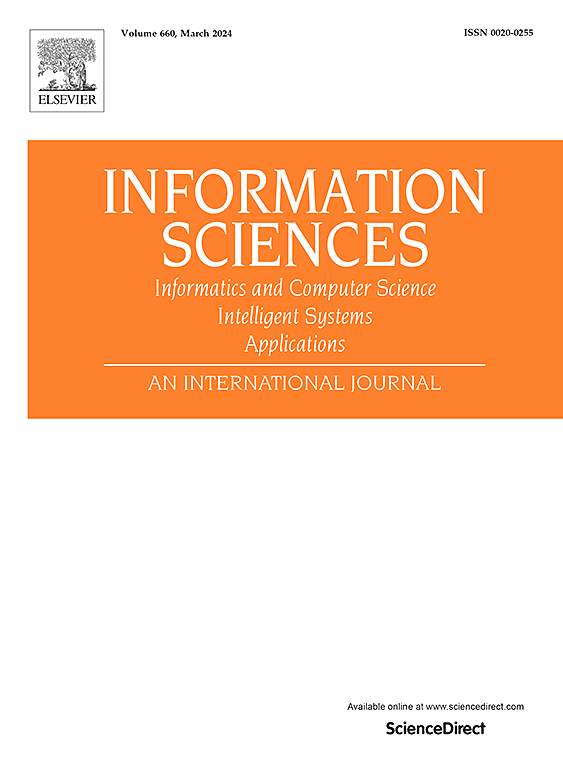Traffic forecasting using spatio-temporal dynamics and attention with graph attention PDEs
IF 8.1
1区 计算机科学
0 COMPUTER SCIENCE, INFORMATION SYSTEMS
引用次数: 0
Abstract
Accurate traffic forecasting is vital for optimizing intelligent transportation systems (ITS), yet existing models often struggle to capture the complex spatio-temporal patterns of urban traffic. We present GAPDE (Graph Attention Partial Differential Equation), a novel framework that integrates Partial Differential Equations (PDEs), Graph Convolutional Networks (GCNs), and advanced attention mechanisms. GAPDE enables continuous-time spatio-temporal modeling and dynamically prioritizes critical features through attention-driven traffic forecasting. Experiments on benchmark datasets, including PEMS-BAY, METR-LA, and various PeMS collections (PeMS03, PeMS04, PeMS07, PeMS08, PeMSD7M, and PeMSD7L), demonstrate GAPDE's superior performance over state-of-the-art models such as RGDAN, SGODE-RNN, and STD-MAE. GAPDE achieves up to 9.2 percent lower RMSE and 10.4 percent lower MAE, outperforming baselines in both short- and long-term prediction tasks. It demonstrates strong robustness to missing data, high scalability for large-scale networks, and enhanced interpretability through spatial and temporal attention visualizations. Comprehensive comparative evaluations and an in-depth ablation study further validate the effectiveness of GAPDE's components, including the GPDE block and spatio-temporal attention mechanisms. By combining PDEs, GCNs, and attention mechanisms in a scalable and efficient design, GAPDE offers a robust solution for real-time traffic forecasting in complex urban environments.
基于时空动态和注意力的交通预测
准确的交通预测对于优化智能交通系统(ITS)至关重要,但现有模型往往难以捕捉城市交通的复杂时空模式。我们提出了GAPDE(图注意偏微分方程),这是一个集成了偏微分方程(PDEs)、图卷积网络(GCNs)和高级注意机制的新框架。GAPDE支持连续时间的时空建模,并通过注意力驱动的流量预测动态地优先考虑关键特征。在基准数据集(包括PeMS - bay、meter - la和各种PeMS集合(PeMS03、PeMS04、PeMS07、PeMS08、PeMSD7M和PeMSD7L)上进行的实验表明,GAPDE的性能优于RGDAN、SGODE-RNN和STD-MAE等最先进的模型。GAPDE实现了9.2%的RMSE和10.4%的MAE降低,在短期和长期预测任务中都优于基线。它对缺失数据具有很强的鲁棒性,对大规模网络具有很高的可扩展性,并通过空间和时间注意力可视化增强了可解释性。综合比较评价和深入消融研究进一步验证了GAPDE的组成部分,包括GPDE阻滞和时空注意机制的有效性。通过将PDEs、GCNs和注意力机制结合在一个可扩展和高效的设计中,GAPDE为复杂城市环境中的实时交通预测提供了一个强大的解决方案。
本文章由计算机程序翻译,如有差异,请以英文原文为准。
求助全文
约1分钟内获得全文
求助全文
来源期刊

Information Sciences
工程技术-计算机:信息系统
CiteScore
14.00
自引率
17.30%
发文量
1322
审稿时长
10.4 months
期刊介绍:
Informatics and Computer Science Intelligent Systems Applications is an esteemed international journal that focuses on publishing original and creative research findings in the field of information sciences. We also feature a limited number of timely tutorial and surveying contributions.
Our journal aims to cater to a diverse audience, including researchers, developers, managers, strategic planners, graduate students, and anyone interested in staying up-to-date with cutting-edge research in information science, knowledge engineering, and intelligent systems. While readers are expected to share a common interest in information science, they come from varying backgrounds such as engineering, mathematics, statistics, physics, computer science, cell biology, molecular biology, management science, cognitive science, neurobiology, behavioral sciences, and biochemistry.
 求助内容:
求助内容: 应助结果提醒方式:
应助结果提醒方式:


